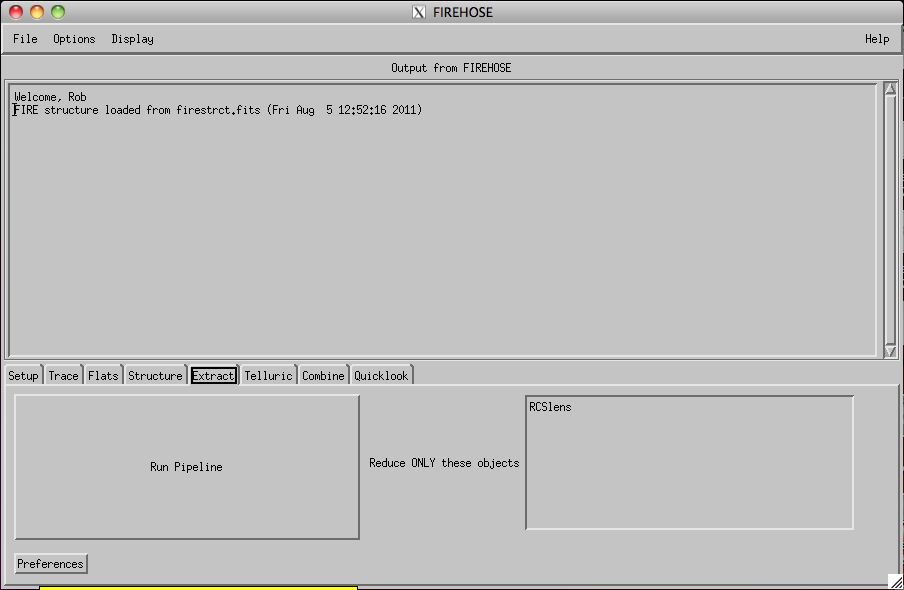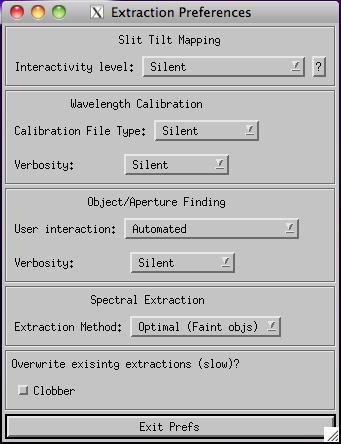The heart of the software is contained in the Extraction step, where essentially all of the heavy lifting occurs. It is a slow process, taking roughly 15 minutes per science frame on a fairly modern MacBook pro. During extraction, the following steps are performed:
- A 2D wavelength map is determined by matching each order to a template spectrum of the OH sky lines and/or ThAr arc lamp spectra. This produces an output file containing the log of the wavelength for each pixel on the array (and in an order). The wavelengths are corrected for heliocentric velocity shifts, and are in vacuum units by default (since the instrument is in vacuum).
- The software calculates tilt of the slit in each order for accurate sky subtraction.
- A first pass 2D sky subtraction is performed for the purposes of object finding.
- Each order is collapsed in the wavelength direction to locate the object trace. The trace is then fit over the full order.
- An iterative procedure is used to perform a simultaneous fit of both the object profile and background sky residuals.
- An optimally-weighted extraction is performed using the profile determined in (5).
- Spectra are stored on an order-by-order basis in units of counts vs. wavelength.
For high signal-to-noise ratio data, a non-parametric b-spline is fit to the object profile; at lower SNR a Gaussian model is used.
This process was fully automated in early versions of the pipeline but we have begun adding the ability to set user preferences for extraction. To edit the preferences, click the corresponding button on the lower left hand corner of the "Extract" tab:
This will bring up a separate preferences panel that looks like the following:
During extraction, you will see plots of the object profile appear to indicate data quality. The plots show a cross section of the object profile with errors, and the resultant fit. As the iterative model fit and local sky subtraction improve, you should see the residuals in this plot diminish, through each iteration on a given order.
Because this process is slow, it can take a day or more to reduce a full run or data. In many cases you are interested in a particular object. You can choose a subset of the full target list to extract to speed the process. To do this, simply highlight the names of the targets you want to extract given the list at right of the panel. If you have already reduced some of your frames, firehose will not re-reduce them unless the "Clobber" button is pressed.
The "Interactive" button gives you an option to check intermediate steps in the process. It is not recommended for novices, as there are many stops in the code that make a pipeline reduction tedious.

